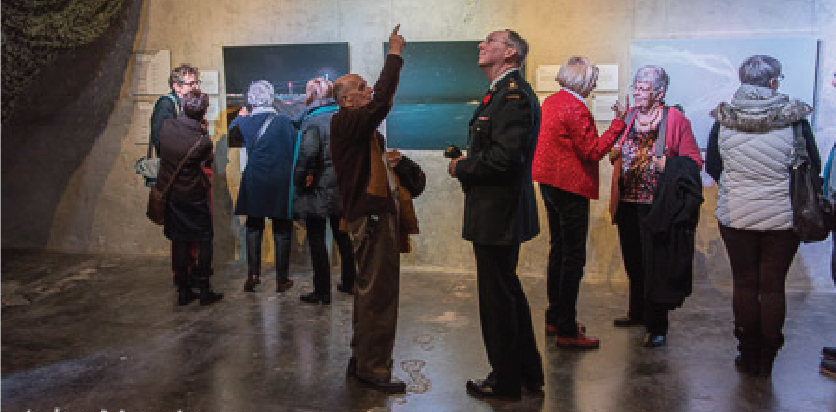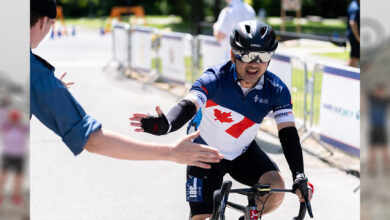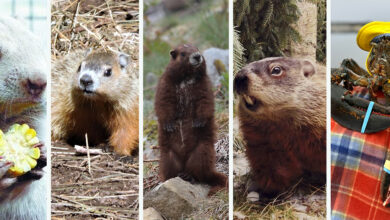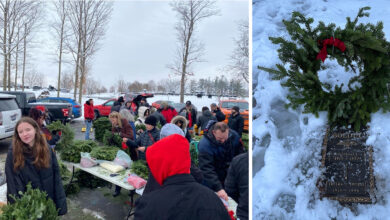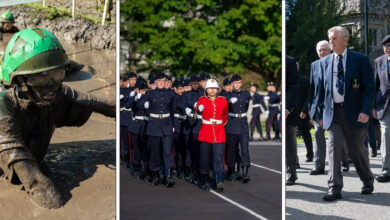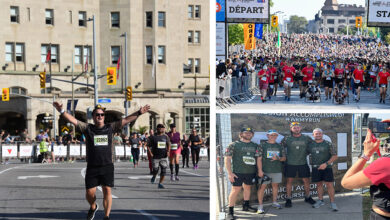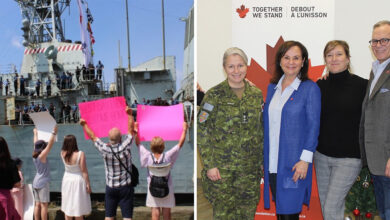Events
CAF Artists Program display their work at Diefenbunker Museum
Various CAF operations around the world, captured through the eyes of ten artists are now on display at the Diefenbunker Museum. On display until Jan 31, the exhibit, entitled Group Six, is the culmination of the work of artists that went through the Canadian Forces Artists Program (CFAP) between 2012 and 2013.
The program, running in its 15th year, showcases the work of artists working in multiple forms of media and portrays the CAF both at home and abroad.
Artists featured in the exhibit include musicians Joseph Amato and Alicia Payne who developed the oratorio With Respect from their experience; filmmaker Sophie Dupuis, who filmed Quiet Forces, a documentary on naval experience aboard the HMCS Ottawa; Mary Kavanagh a visual artist who filmed and photographed the Radiological Analysis Defence group in Ottawa who works with radiation, biological and chemical detection training; Thomas Kneubühler who experienced the polar night with the light he was able to discover there: starlight, moonlight, electric light and, briefly, sunlight; author Sharon E. McKay who wrote a fictional book on the only women’s prison in Kabul; and long-time collaborators with the CFAP Rhonda Weppler and Trevor Mahovksy.
Also featured in the exhibit are artists Leslie Reid and Leslie Hossack.
Reid, a painter, photographer, and videographer for decades, was inspired to apply for CFAP to follow in the footsteps of her father who was a pilot in the RCAF. Reid’s father spent many years on aerial photography flights in northern Canada with the RCAF photo squadrons after the Second World War.
“For me it was an extraordinary opportunity for many reasons. For one I have this military family background. It was an opportunity to revisit an aspect of my life that ended when my father died quite young. I’d always been fascinated by his story and his stories in the north. He loved the north, and he’d always bring these artifacts. I’d always think, growing up, that every little girl had these polar bear skins to play on and nap on because we had one,” recalled Reid.
Reid also wanted to visit the north to see the effects of climate change.
“Current issues, particularly of climate change in the north where it’s intensified, made it more urgent for me to go there. But the opportunity to see the north from many multiple points of view was very important for me,” explained Reid.
In 2013, she finally had the chance to make the journey to the north and retrace the flights her father once took. She flew on Hercules and Griffin aircrafts as part of Operation NANOOK, the CAF’s annual sovereignty operations. Reid flew both in northern Canada and the High Arctic, out of Yellowknife and Whitehorse.
In her experiences, she was able to make the direct link between the photos the squadron had taken and the flyovers she was a part of decades later. She was also drawn to the activities on the ground of the work of the military.
Her entire project was originally called “Mapping Time” but was later changed to “Mapping a Cold War” since the struggles of sovereignty that plagued Canada decades ago when the squadrons first flew out north still linger today.
The pieces on display in the Group Six exhibit from Reid’s flights to the north are two paintings of glacier systems around Whitehorse. The entire collection from Reid’s experiences in northern Canada will be on display in an exhibition in Calgary at the Military Museums of Calgary in the near future.
Working in a completely different continent and with a completely different angle was photographer Leslie Hossack. Hossack’s work focuses on capturing monumental events of the 20th century through the eyes of architecture. Hossack’s work has taken her to photograph the conflict between Israel and Palestine, the architectural remains of Nazi Germany and legacy of Winston Churchill in England.
“Although I learn a great deal from books I really think that history is recorded in buildings that witnessed the events. So I set off to find and photograph the buildings that witnessed monumental events,” explained Hossack.
After being accepted into CFAP, Hossack poured over lists of CAF operations. She finally decided to visit Kosovo. A total of five CAF personnel are stationed in Kosovo as part of the NATO Kosovo force at the UN Kosovo Force Headquarters camp.
She spent 12 days in 2013 experiencing life as a soldier in Kosovo. Hossack was not allowed to leave the camp without a member of the CAF accompanying her. Luckily, many of the military members had duties off the camp. During her visits into the city of Pristina, she was able to witness the effects of war still visible in the country.
“The more I got off the base, the more I saw evidence of war, the destroyed buildings. And I’ve always been fascinated by the architecture of memory and commemoration, and I was surrounded by it
“I was there almost 15 years after the last NATO bombs had been dropped on Serbian positions, but it was like I was there 15 months not 15 years later,” said Hossack.
The two images selected from her visit to Kosovo capture the war-torn buildings of the country. Hossack also created a book that contains 34 images from her visit called “Testament: Leslie Hossack in Kosovo.”
The exhibit was curated by Dr. Laura Brandon, recently retired Chief Curator of War Art at the Canadian War Museum in Ottawa.
Admission to the exhibit is included in the museum’s regular admission price. For more information regarding the Diefenbaker Museum and rates visit their website.


